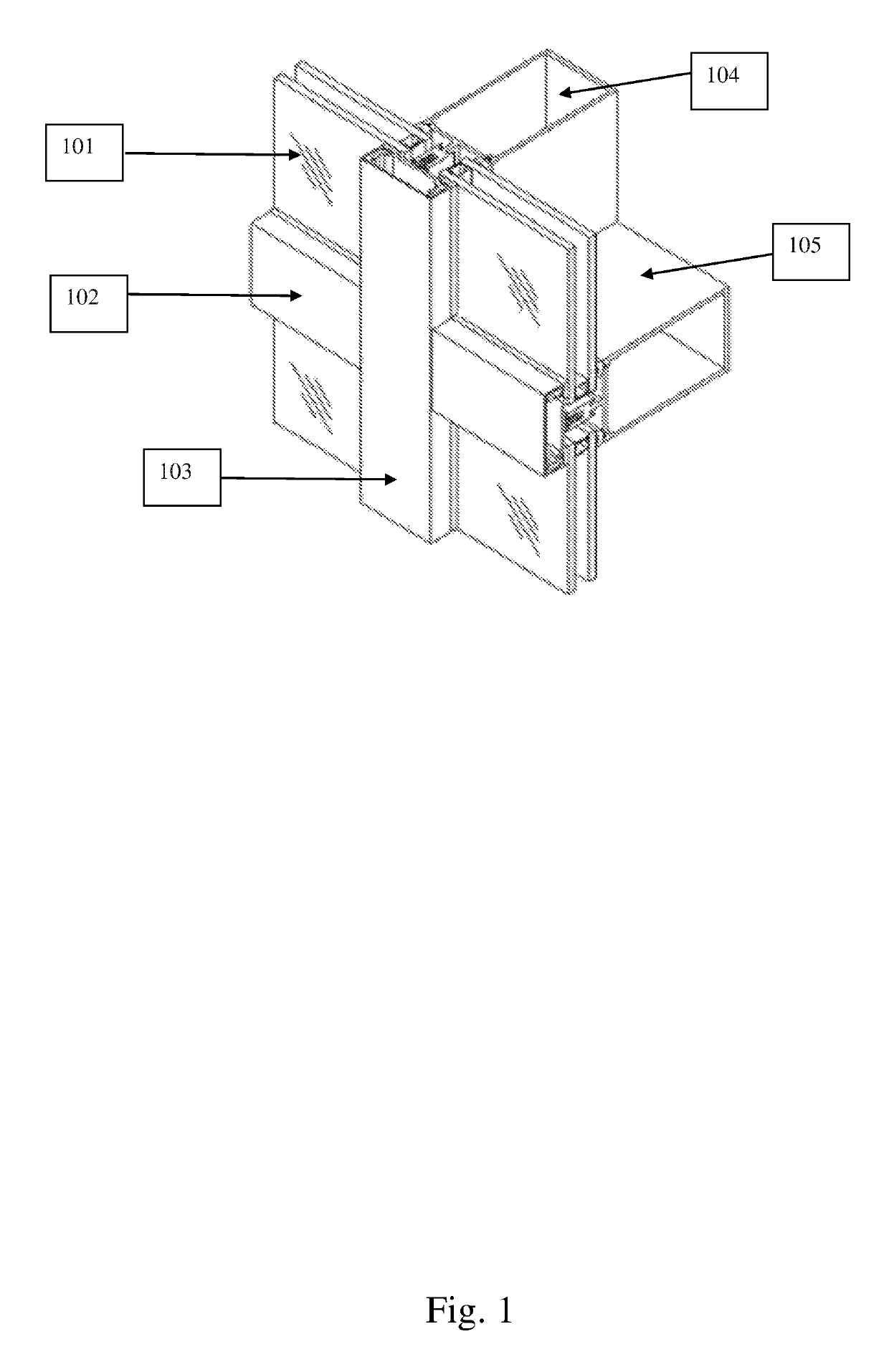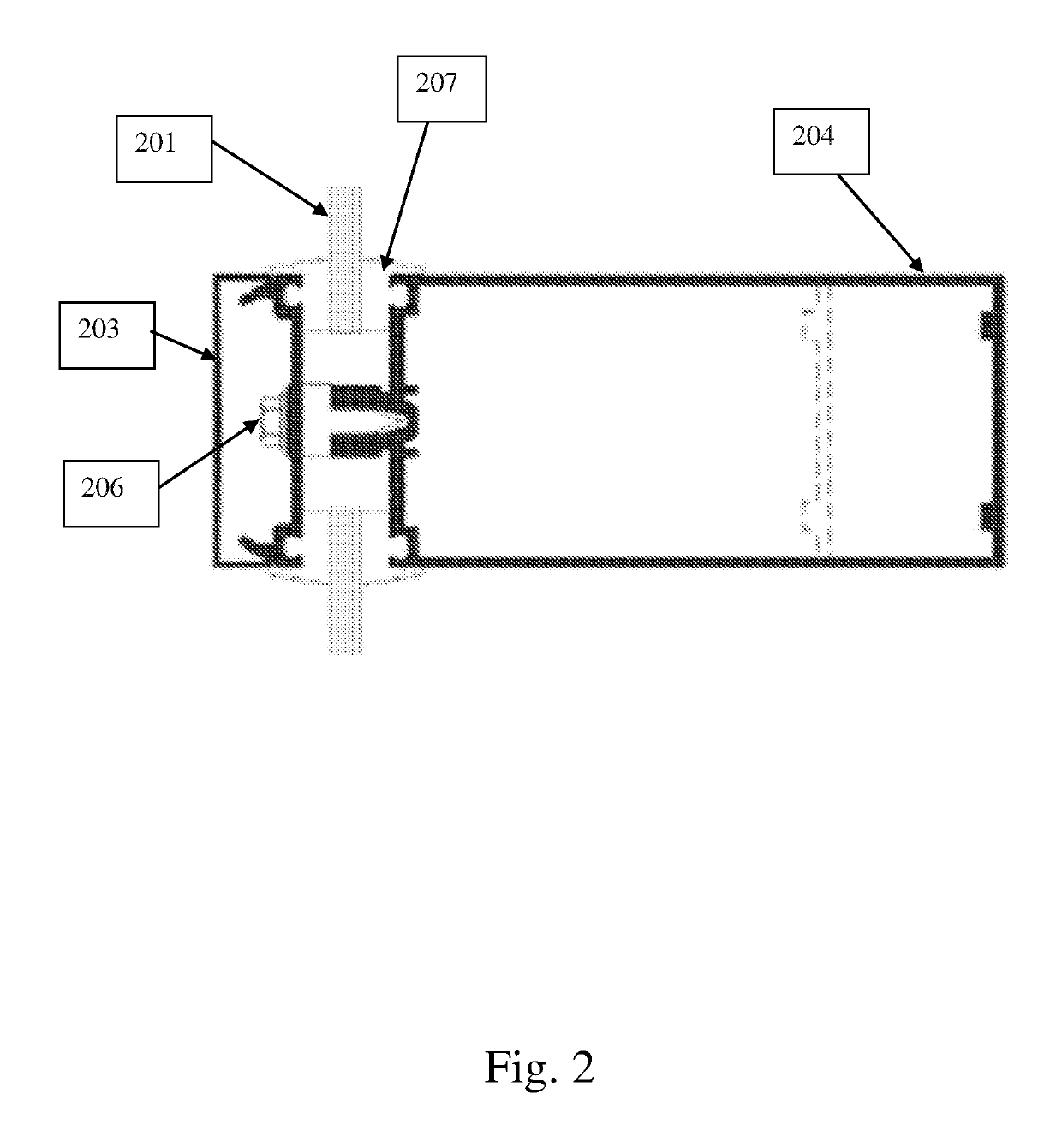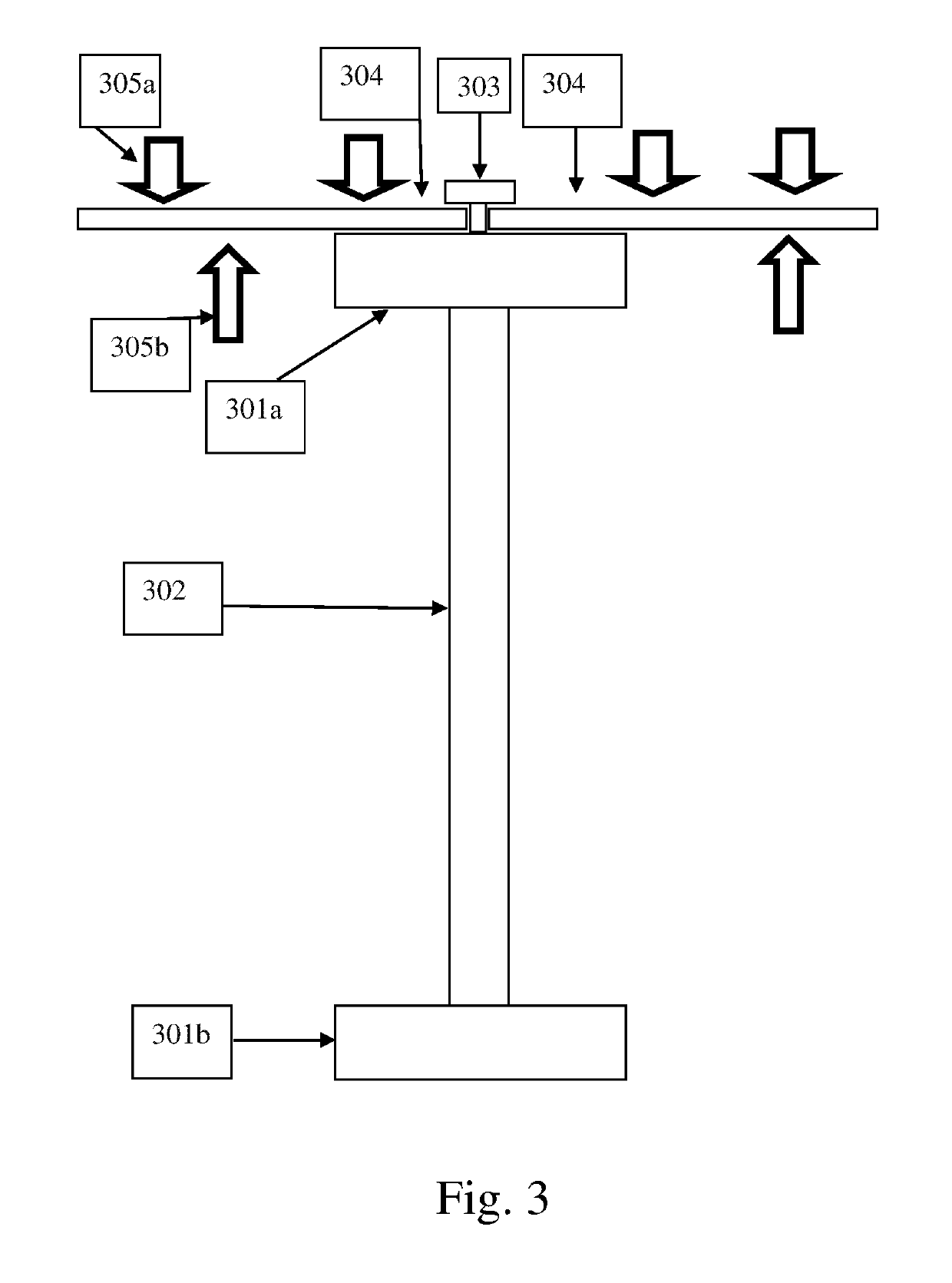Curtain wall frame
a curtain wall and frame technology, applied in the field of curtain walls, can solve the problems of increased production costs, increased production costs, and insufficient support structures for typical curtain walls, and achieve the effect of increasing the moment of inertia valu
- Summary
- Abstract
- Description
- Claims
- Application Information
AI Technical Summary
Benefits of technology
Problems solved by technology
Method used
Image
Examples
Embodiment Construction
[0052]The present invention will be understood from the following detailed description of preferred embodiments, which are meant to be descriptive and not limiting. For the sake of brevity, some well-known features, methods, systems, procedures, components, circuits, and so on, are not described in detail.
[0053]A standard support is shown in FIGS. 1,2.
[0054]Here the glass panes 101 are shown, held in place by horizontal transom and vertical mullion extruded rear support members 104,105 respectively. The panes are held in tension between these rear members 104,105 and holding caps 102,103 which are generally attached to the rear members by means of screws or the like concealed within the members.
[0055]FIG. 2 shows the same support members in section. Here the bolt 206 holding the rear support 204 to the holding cap 203 is visible. This bolt holds the rear support and the holding cap together and thereby compresses the window section 201 between flexible abutting members 207 which may...
PUM
 Login to View More
Login to View More Abstract
Description
Claims
Application Information
 Login to View More
Login to View More - R&D
- Intellectual Property
- Life Sciences
- Materials
- Tech Scout
- Unparalleled Data Quality
- Higher Quality Content
- 60% Fewer Hallucinations
Browse by: Latest US Patents, China's latest patents, Technical Efficacy Thesaurus, Application Domain, Technology Topic, Popular Technical Reports.
© 2025 PatSnap. All rights reserved.Legal|Privacy policy|Modern Slavery Act Transparency Statement|Sitemap|About US| Contact US: help@patsnap.com



